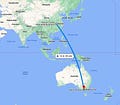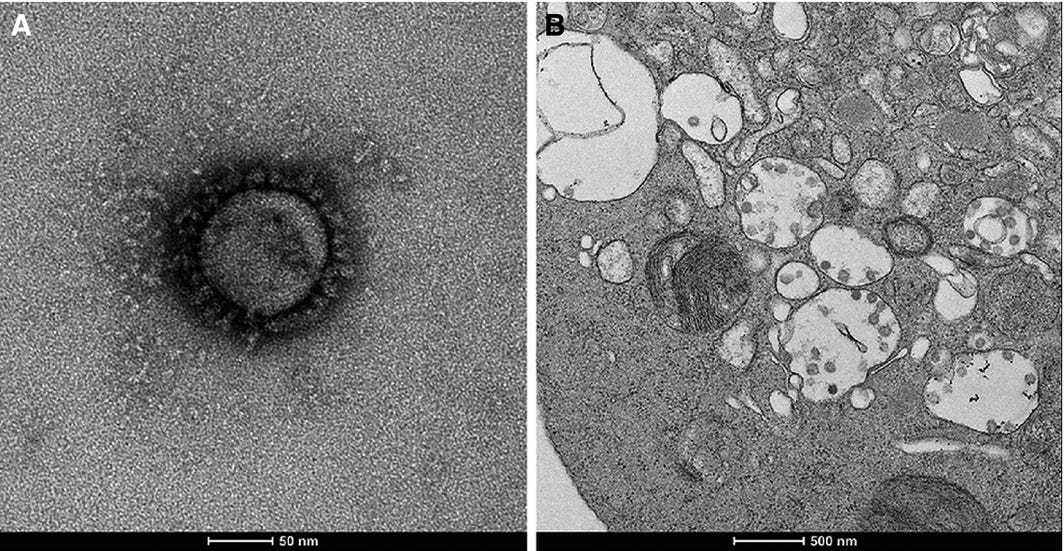First detected Covid19 case arrived in Melbourne from Wuhan on 19 January 2020
How many people were infected on the flight, in the airport and everywhere he went?
This is a brief summary of the first isolation and successful culture of Covid19 from Wuhan outside China and export of the live virus to numerous labs in the world.
The 58-year-old man from China was admitted to the Monash Medical Centre, Melbourne, from the emergency department on 24 January 2020 with fever, cough, and progressive dyspnoea.1
The man gave a nasopharyngeal swab and sputum sample (which carried far higher viral load), and he tested positive for SARS‐CoV‐2.
Reverse Transcription Polymerase Chain Reaction (RTPCR) was used, which means that the Melbourne researchers must have had the information from Chinese authorities on the selections of primers.
His sputum specimens remained positive for SARS‐CoV‐2 for 8 days after initial presentation, compared with 4 days for nasopharyngeal swabs.
Electron microscopy confirmed the presence of virus particles with morphology characteristic of viruses of the family Coronaviridae.
A. 100 nm spherical virion displaying the characteristic crown‐like fringe of spike proteins.
B. Infected VERO/hSLAM sections with membrane‐bound vesicles containing virus.
Whole genome sequencing of the viral isolate and phylogenetic analysis indicated the isolate exhibited greater than 99.99% sequence identity with other publicly available SARS‐CoV‐2 genomes lodged with an international database. He has three previously described single nucleotide polymorphisms and a 10 base pair deletion in the 3’ untranslated region (3'UTR).
Inoculation of Vero/hSLAM cells with material from the nasopharyngeal swab led to the isolation of SARS‐CoV‐2 virus in culture, the first isolation outside China during the early stages of the epidemic.
Within 24 hours of isolation, the first Australian SARS‐CoV‐2 live virus isolate was exported to local and overseas reference laboratories and major North American and European culture collections. His Covid19 was given the name BetaCoV/Australia/VIC01/2020, full genomic sequence was uploaded to GISAID with accession number, EPI_ISL_406844.
Thoracic computed tomography scan on admission day four identified extensive ground glass opacities in his lungs. He had low lymphocyte count. His C‐reactive protein, alkaline phosphatase, γ‐glutamyltransferase, alanine aminotransferase were very high. Ultrasound revealed Liver damage. The man was given intravenous Ceftriaxone (2 g/day) and Azithromycin (500 mg/day) to treat potential secondary bacterial pneumonia, although no bacterial pathogen was identified.
He was discharged from hospital on 7 February 2020. The researchers submitted their findings to the Medical Journal of Australia on 25 February 2020.
By 12 March 2020, there had been 140 confirmed cases in Australia and 3 patients had died.
Wuhan the perfect place to launch a Pandemic
Wuhan International Airport is the 14th busiest in China.
About 20 million passengers per year, provides the perfect centre from which a global pandemic can be launched without any special effort.2
Leon Caly, Julian Druce, Jason Roberts, Katherine Bond, Thomas Tran, Renata Kostecki, Yano Yoga, William Naughton, George Taiaroa, Torsten Seemann, Mark B Schultz, Benjamin P Howden, Tony M Korman, Sharon R Lewin, Deborah A Williamson and Mike G Catton. https://www.mja.com.au/journal/2020/212/10/isolation-and-rapid-sharing-2019-novel-coronavirus-sars-cov-2-first-patient
https://en.wikipedia.org/wiki/Wuhan_Tianhe_International_Airport




All this time I have been reading people writing, "they have not isolated the virus" or similar, and yet here we have a literal photograph of its 100nm self.
Thanks!
Do we know why he came to Melbourne?
Geoff, I previously commented on this study. Do you remove my commment?